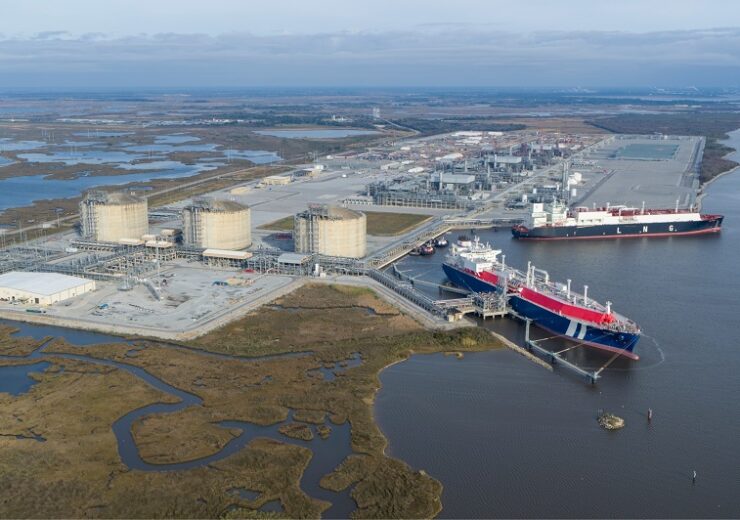The proposed Hackberry carbon sequestration project is mainly designed to capture, transport, and store CO2 from the combined Cameron LNG phase 1 and the proposed phase 2 export projects in Southwest Louisiana

Cameron LNG is expected to serve as anchor customer of the Hackberry carbon sequestration project. (Credit: Sempra Infrastructure)
Sempra Infrastructure along with its partners TotalEnergies, Mitsui and Mitsubishi will develop the Hackberry carbon sequestration (HCS) project at the Cameron LNG facility in Louisiana, US.
The parties have signed a participation agreement in this connection.
As per the agreement, the Hackberry project is designed mainly for the capture, transportation, and storage of carbon dioxide (CO2) from the combined Cameron LNG phase 1 and the proposed phase 2 export projects.
The agreement also gives the basis for Sempra Infrastructure and the other three firms to create a joint venture for the carbon sequestration project in Southwest Louisiana.
Sempra Infrastructure CEO Justin Bird said: “We are excited to advance the development of the Hackberry Carbon Sequestration project, the first of Sempra Infrastructure’s net zero solutions projects, to help Cameron LNG produce cleaner liquefied natural gas (LNG) for its customers.
“This project is expected to be among the first North American carbon capture facilities designed to receive and store CO2 from multiple sources, and our goal is for this facility to set the gold standard for safe and permanent CO2 storage.”
In August 2021, the Hackberry project filed an application with the US Environmental Protection Agency to seek a Class VI Injection well permit for permanent storage of up to two million tonnes per year of CO2.
According to TotalEnergies, the CO2 from the Cameron LNG project will be captured by acid gas removal units. The gas will then be dehydrated, compressed, and transported by pipeline nearly 10km away.
The planned injection well will help in permanently storing the CO2 in a saline aquifer.
TotalEnergies LNG senior vice president Thomas Maurisse said: “We are pleased to join force with our partners to significantly reduce CO2 emissions at Cameron LNG export terminal, thus enabling us to supply our customers with low-carbon LNG, a key fuel for the energy transition and a valuable asset for diversifying Europe’s energy supply.
“This project, aiming at reducing greenhouse gas emissions associated with the LNG value chain, is a concrete illustration of TotalEnergies’ sustainability and climate strategy implementation.”
The development of the Hackberry carbon sequestration project is conditional on various risks and uncertainties. These include executing additional project-related agreements, obtaining all required permits, and making a final investment decision.
